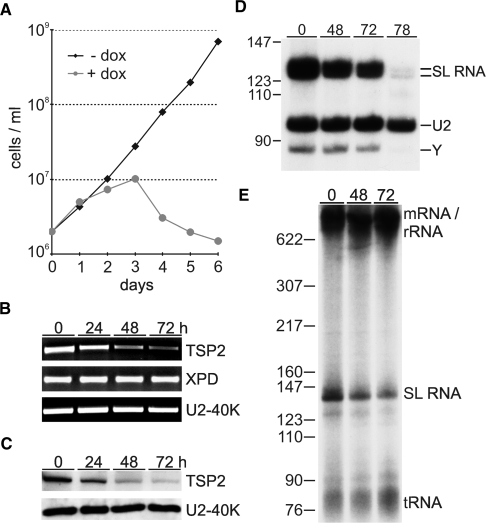Figure 4.
The role of TSP2 in parasite viability and SLRNA transcription in vivo. (A) Growth curves of a representative clonal procyclic cell line, transfected with a construct for inducible TSP2 dsRNA expression, in the presence or absence of the inducing reagent doxycycline. (B) Semi-quantitative RT–PCR analysis of TSP2, XPD and U2-40K mRNA in total RNA preparations of cells which were doxycycline-induced for 0, 24, 48 and 72 h. (C) Immunoblot of whole cell lysates derived from the same cells was probed with TSP2 and U2-40K-specific polyclonal antisera. (D) Primer extension analysis of SL RNA and, as a control, of U2 snRNA in total RNA preparations of induced cells. As indicated on the right, extension products of cap methylated and unmethylated SL RNA differ by 4 nt. Y specifies the SL RNA intron-specific extension product of the branched Y structure generated in the first trans splicing step. (E) Radio-labeled nascent RNA of induced cells was separated on a 6% polyacrylamide-50% urea gel and visualized by autoradiography. Pre-m/rRNA, SL RNA and tRNA are indicated on the right and pBR322-MspI marker sizes on the left.

